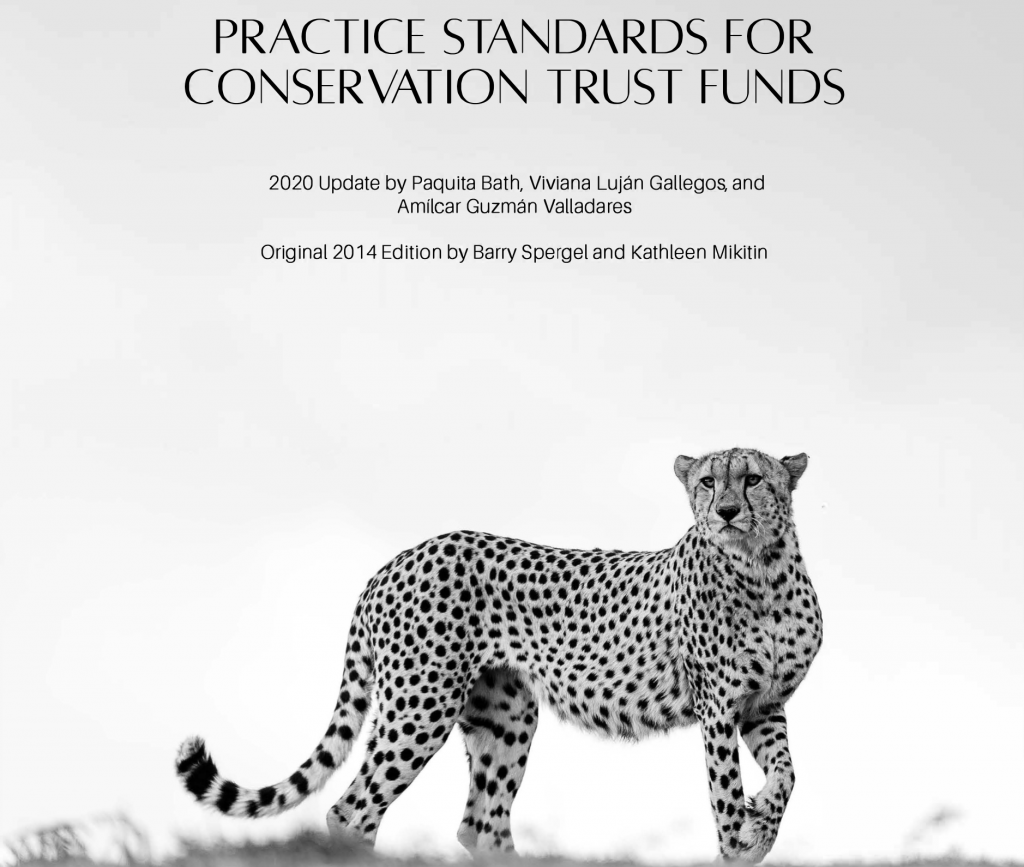Wolfs Company and our partner Aligning Visions were commissioned by the Conservation Finance Alliance (CFA) and a Task Force of around 20 international experts to develop the 2020 version of the Practice Standards for Conservation Trust Funds, which is an update and expansion of the much-used standards published in 2014. This revision also built on the findings of the 10-Year Review of Conservation Trust Funds, conducted in parallel by the same team led by Wolfs Company.
Conservation Trust Funds (CTFs) are independent institutions that mobilize resources from diverse sources and direct these resources primarily through grants, to multiple nature conservation programs and projects, through a wide variety of organizations. The Practice Standards aim to serve as a tool for CTFs for improving their design, management, monitoring and evaluation. The Practice Standards are also intended to increase the understanding of how CTF‘s function, by current and potential donors, national governments, civil society organizations, and CTF‘s themselves.
Core areas and cross-cutting themes for Conservation Trust Funds
The 2020 Practice Standards for CTFs are divided into the following seven core areas that are considered essential in the development of CTFs as effective institutions:
- Governance addresses the composition, functions and responsibilities of a CTF governing body or bodies and the content and role of governing documents
- Institutional Effectiveness addresses strategic planning, interactions with governments, partnerships with other organizations, and strategic planning
- Programs covers how CTFs achieve their missions through grant-making and other expenditures, set goals and targets, manage the grant cycle, and monitor and evaluate both grants and projects
- Administration, takes up the themes of human resource policies, staff roles and responsibilities, operations manuals, use of financial resources, audits, and the use of technology
- Asset Management discusses the components of investment strategies, fiduciary responsibilities and relationships with various types of investment professionals
- Resource Mobilization: covers fundraising and managing relationships and funding sources to enhance the overall financial sustainability of biodiversity conservation, particularly protected area systems, but also including funding for sustainability goals and climate action programs
- Risk Management and Safeguards addresses the policies and procedures needed to identify and address risks and adopt national and internationally used environmental and social safeguards
In addition, the 2020 Practice Standards highlight four cross-cutting themes throughout the core areas:
- Communications Standards touch on the policies for reporting and disseminating information about the CTF to key audiences through various media.
- Human Resources Standards address how CTFs organize and support staff to advance the mission and goals of the organization.
- Monitoring and Evaluation Standards cover the periodic collection and analysis of data relative to stated project goals and objectives to enable practitioners to then evaluate the impact, adjust management decisions, and generate learning.
- Technology Standards consider how CTFs set internal controls and policies to manage technology use, increase efficiencies, and minimize risks in a digital age.
Read more about the 2020 Practice Standards on the CFA website.
The 2020 Practice Standards for CTFs are being explored in more depth through a series of monthly webinars hosted by the CFA’s Environmental Funds Working Group.
